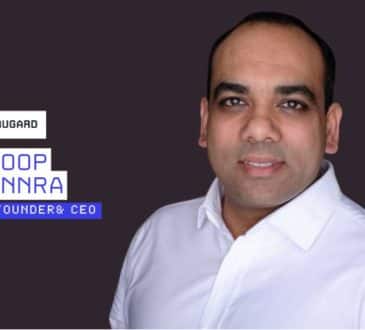Spiritual Leadership: It’s Not What You Think

The word “spiritual” connotes a religious theme but as it pertains to business leadership that is not the intention or foundation of the term. I
Over the years, I have gained a keen awareness of the critical success tenants leaders should follow to reduce stress, develop high performing teams, achieve financial objectives and live a happy, healthy, and successful life.
I learned to be a proponent of holistically approaching my life, family, and business with these tenants. What is Spiritual Leadership? Spiritual Leadership is when a leader creates an environment where everyone is inspired and fulfilled, which in turn leads to widespread success across the board. Think of the most successful companies of our day. Many of them have created a kind of culture that is inspiring and sees their employees as people first.
If you are a parent, business leader, senior executive, health care professional, teacher, religious leader or any role where you are responsible for helping people and/or an organization succeed, you have the opportunity to be a spiritual leader. Spiritual Leadership is the new way to create a culture where everyone wins, and not in the “everyone gets a trophy” kind of sense, but actually achieving and cultivating an environment of success. Great organizations are built on high standards.
Great leaders create trust by behaving in manners that are consistent with effective leadership principles. A leader’s behavior is what reveals who they really are. A leader’s behavior is more important than what they promote, claim their values to be, best practices they instill, or even what they teach. How a leader behaves determines what their culture will be and to what extent people will follow, trust and perform with them.
It is my experience that many leaders do not comprehend this concept at its core. I have worked with leaders who think they can outsmart their people. They don’t outright say this, but it is evident in the “how” of their work. The interesting part is they don’t think their people can see it. They feel they can persuade their teams with compelling presentations, company meetings, and team gatherings. They are more often than not, sorely mistaken.
My experience working with great leaders is that those who display proven leadership behaviors during prosperous and challenging times alike, create a winning and loyal following. From my work with these great leaders, I have tabulated nine specific principles that make up what we call Spiritual Leadership. Time and time again I have seen these nine principles achieve great results. Many of these will probably not be new to leaders but the secret is how they are implemented. Organizations that implement them properly experience less turnover, have more loyalty, and perform at a high caliber.
The same applies to family collaboration. Some of these behavioral principles can be used to create an environment of respect, open communication, and enablement. The result is a unified, loving, and happy family.
Here are the nine principles of Spiritual Leadership that will lead to an environment of success:
- Winning – Everyone must understand that we are in business to win. You must define what winning is and every organization in your company must be committed to that definition. During these times, too many companies have gotten soft. They are so caught up in feel-good opportunities for the company and employees that they forget that if they don’t win, these opportunities will be gone.
- Accountability – Everyone must know they will be held accountable for achieving the results that are expected. No excuses.
- Continuous Learning – If I’m going to hold my team accountable, I must also enable them. It is the company leaders’ responsibility to help their people be the best they can be. Your team must know that you are committed to making them successful as long as they demonstrate the proper work ethic and desire.
- Transparency of Brutal Facts – This is where many leaders fail. Creating a great culture is based on trust. Trust is achieved when people feel they are being communicated with in a transparent way. They admire when leaders discuss and address the brutal facts of what is going on positively and negatively with the business. No one likes to be lied to or handled with kid gloves.
- Process, Data, Metrics – Assess and lead the team with published data so that everyone is in 100% alignment as to how you measure the business and individual contribution.
- Market Driven – While you will innovate based on your vision, you must keep a close eye on the signals the market gives you. Your team must be confident that you will listen to their feedback and the feedback of your clients/prospects.
- Diversity – Diverse thinking drives innovation and optimization. Encouraging diversity is important to success.
- Caring and Recognition – Your team needs to know that you care about them as people, not just as employees who deliver certain results. Recognizing their contributions and providing guidance and affirmations to further their careers and self esteem is critical.
- Having Fun – Building a global successful company takes significant personal sacrifice and hard work. It is important you find time to have fun together in an appropriate businesslike approach. When the team has fun together, they are more committed to the cause and take more pride in their contribution.
Now for a few stories highlighting Spiritual Leadership
As a leader, I always feel I have the responsibility to help members of my team grow and plan the next chapter of their career. The people who work with us and for us desire to have bigger and better things in their lives. Leaders tend to forget this and feel they need to do things to keep people in their organization for as long as possible. The focus is on retention. I see it differently.
On a six-month schedule, and sometimes quarterly, I would sit down with my direct reports as well as others reporting to my direct reports and have what I call a “next journey” discussion. The “next journey” discussion is all about finding out what this person wants next in her/his career, what companies are attractive to them, do they want to stay on their current career path or do they want to completely change what they are doing. This is not a performance review. This is all about understanding what the employee wants next in their career and doing everything you can to help them get there. We are all in this life together and one of the best gifts we can give is encouragement to push people towards their ultimate goals rather than simply have them conform to ours.
During these sessions, sometimes I find people want to get to the next promotion in their current function so we discuss how they need to prepare themselves for that. Often I will hear them share that they want a completely different role to broaden their experience. I then help them map out what they need to learn and how to prepare for that direction. During these sessions, I like to ask what other companies they are impressed with and may want to work with some day. This takes them by surprise because they find it odd that I’m willing to talk about other companies. I tell them that we are not the greatest company on earth (none are) and there may be a company they want to work for in the future and we support them in their aspirations. As we discuss this they see we have a genuine interest in helping them outline a path to investigate other companies and actually using our connections to help them get there. This activity is part of principle number 8 – Caring and Recognition.
This approach clearly demonstrates to the employee that I care about them as people. Not just an employee performing for our company. I recognize they may have new desires and I care enough to help them get there. This creates more loyalty than any rah-rah speech an executive can conduct.
Now, what Spiritual Leadership is not.
A technology company I was advising was going through a very difficult time driving revenue and creating a positive and productive culture. While I helped the CEO fix the revenue problem and we were doing 300% more quarterly sales transactions than they previously experienced, the culture problem remained. One of the key reasons was that the employees didn’t feel the CEO and his co-founder were completely transparent and honest with them. The employees felt the CEO and co-founder were always “spinning” a tale about the business to make everyone feel the company was doing very well. Believe me, the employees were not fooled. Worse, they lost trust in this CEO and co-founder.
I addressed this issue with the CEO and co-founder and encouraged them to shift from “spin-doctor tendencies” to being 100% transparent as to what was working for the business and where the ugliness was. They trusted me and gave it a try. It was amazing how quickly the employees saw the difference and felt they now became part of the “trusted” group. They actually worked harder to fix the problems after the executives were honest about the challenges.
When COVID continued, the company made the decision to have a 100% work from home environment and did not renew the lease for office space. Everyone agreed that this was a good move and the culture continued to improve. However, the CEO decided to move his family to an exotic location, which in itself was fine. However, he didn’t want to tell the employees because he was afraid that the employees would feel he “checked out” and then the employees may also want to move to similar locations and not work as hard. BIG mistake. I advised him as such. How long do you think it took for the employees to find this out? It was about two weeks and then what happened? Trust was again lost! The fact that the CEO went back to his non-transparent ways, caused employees to feel like it was “the same old CEO ways”. I often say founders of companies can be very smart and very stupid! This CEO violated principle number four – Transparency. Don’t make that mistake. Always have the courage to communicate the brutal facts and your employees will support you more.
Written by Stephen D’Angelo.
Bring the best of the CEOWORLD magazine's global journalism to audiences in the United States and around the world. - Add CEOWORLD magazine to your Google News feed.
Follow CEOWORLD magazine headlines on: Google News, LinkedIn, Twitter, and Facebook.
Copyright 2025 The CEOWORLD magazine. All rights reserved. This material (and any extract from it) must not be copied, redistributed or placed on any website, without CEOWORLD magazine' prior written consent. For media queries, please contact: info@ceoworld.biz











